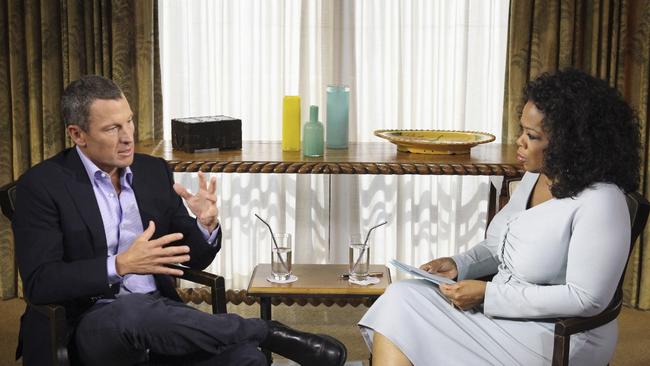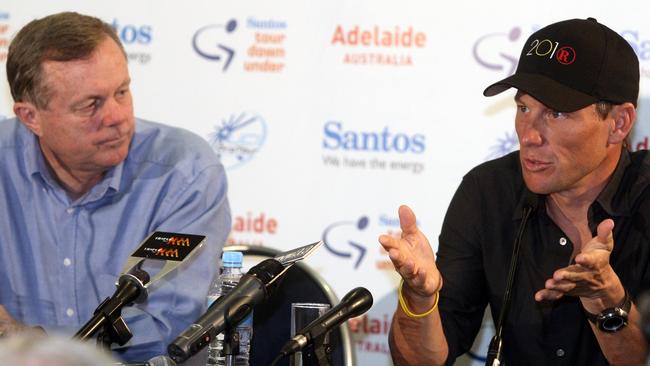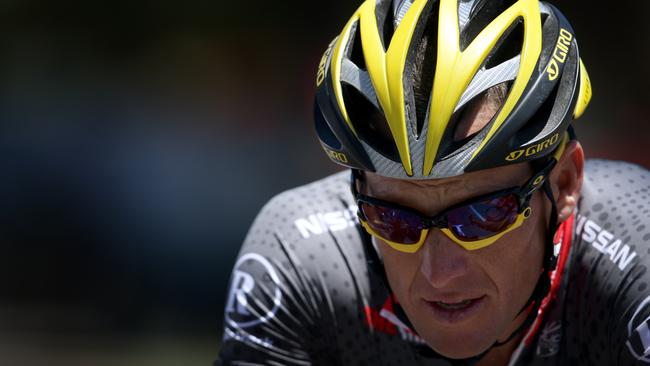Lance Armstrong on the Tour Down Under race that led to his downfall: ‘I wouldn’t change a thing’
DISGRACED drug cheat Lance Armstrong has changed his tune on the ill-fated 2009 Tour Down Under comeback in Adelaide that led to his downfall — now saying he “would not change a thing”.
City
Don't miss out on the headlines from City. Followed categories will be added to My News.
DISGRACED drug cheat Lance Armstrong has changed his tune on the ill-fated 2009 Tour Down Under comeback in Adelaide that led to his downfall — now saying he “would not change a thing”.
Armstrong has previously described his professional comeback as one of the biggest mistakes of his life after he was handed a life ban from cycling in 2012 for using performance enhancing drugs.
But almost five years to the day since he confessed to doping during each of his seven Tour de France victories, Armstrong told The Advertiser that he no longer regretted resurrecting his professional career, starting with the 2009 TDU.
Armstrong‘s return triggered fresh claims about his cheating, which led to the US Anti-Doping Agency investigation which found he had knowingly engaged in long-term, systematic doping.
“If you had asked me three years ago, I would have said ‘absolutely’ (I regret the comeback), but where I sit today, five years post, I wouldn’t change a thing,” Armstrong told The Advertiser.

Asked to rate his contribution to the TDU, with all things considered, Armstrong said; “100 per cent positive”.
The first of Armstrong’s three appearances at the TDU transformed the race, leading to a massive surge in attendances, visitor numbers and international media interest.
But his return to pro cycling also refocused the attention of world sport authorities on allegations of doping that had long swirled around him and the US Postal/Discovery team with which he won seven consecutive Tour de France titles.
The US Anti-Doping Agency investigation concluded in 2012 that Armstrong had been the ringleader of “the most sophisticated, professionalised and successful doping program that sport has ever seen”.
It led to his global disgrace as sport’s most notorious drugs cheat — and a televised tell-all confession with Oprah Winfrey.
Armstrong’s life ban left a stain on the TDU and prompted renewed scrutiny on the State Government’s role in luring the cyclist to Australia.
The government has never revealed how much taxpayer money was spent bringing Armstrong to Adelaide, although a Union Cycliste Internationale (UCI) report in 2015 claimed the amount to be $1 million a year.

Sports Minister Leon Bignell said Armstrong’s involvement “put our race on the map”.
“Lance Armstrong’s appearance at the Santos Tour Down Under came at a time when he was considered the greatest cyclist in the world,” Mr Bignell said.
“He brought the eyes of the world with him to South Australia when he rode in the TDU, taking the race to a whole new level.
“The State Government has continued to leverage this exposure, ensuring crowd numbers continued to climb even after Lance’s final TDU appearance.”

Mr Bignell — who again refused to disclose Armstrong’s appearance fee — said last year’s race attracted 840,000 spectators, up from 548,000 in 2008, pumping more than $56 million in the state’s economy.
The UCI report found world cycling authorities should not have allowed Armstrong to race at the 2009 TDU because of anti-doping regulations, but did so amid “significant political pressure” from Australia.

Tour Down Under race director Mike Turtur this week said he was a “believer” in the cancer survivor’s story during his professional career.
Mr Turtur said Armstrong’s presence changed the TDU forever.
“His presence, the returned benefits to the race and to this state and to awareness around cancer … money cannot buy,” he said.
“The smallest increase that we saw was 100 per cent, it was staggering, and we are still benefiting from that legacy.”
Armstrong told The Advertiser that the TDU was, and is, “without a doubt” one of the best cycling races outside Europe.
He also this week recalled Adelaide’s hot summer days, as well as memories of Hutt St restaurant Chianti and Penfolds winery.


